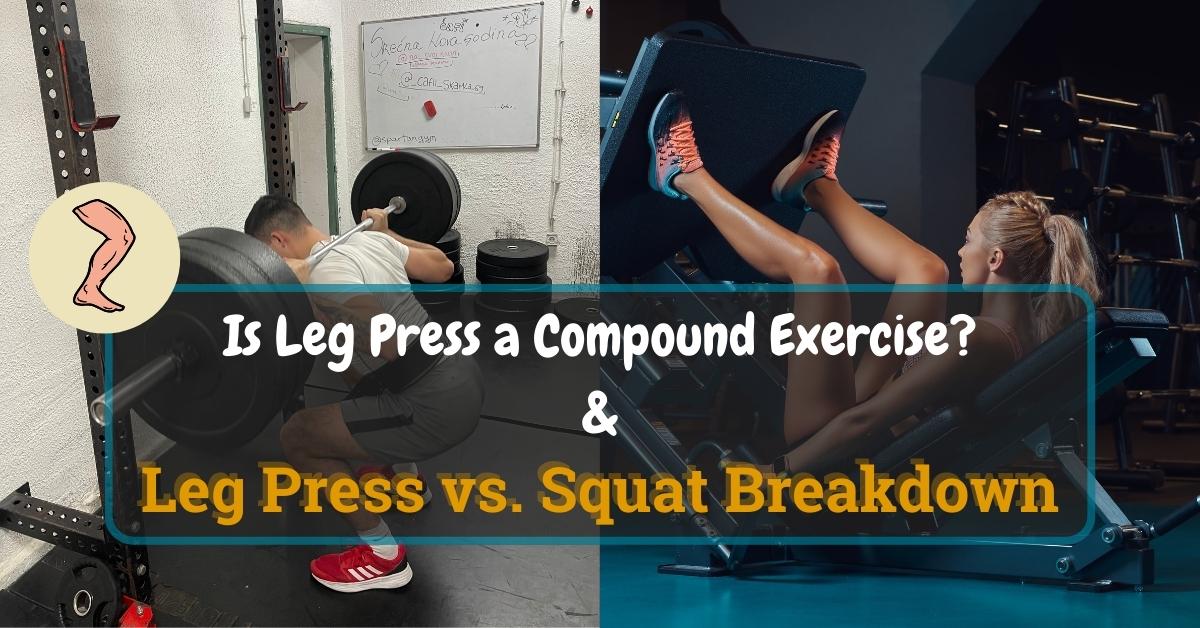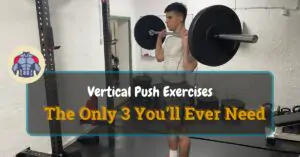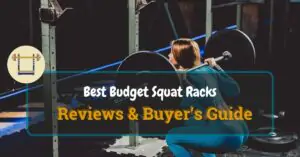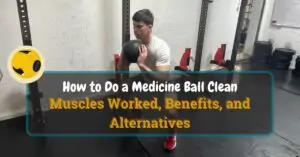So, is leg press a compound exercise? The leg press is an excellent lower-body exercise that will build strength in your leg and hip muscles, such as glutes, quads, and hamstrings.
Table of Contents
ToggleHowever, many trainees want to know if the leg press is a compound exercise and, even more importantly, how functional the leg press exercise is. Is leg press compound or isolation will primarily be determined by a biomechanical analysis of the movement.
Everybody has tried leg presses at least once in their fitness career, but only a few have evaluated what benefits this exercise provides to their locomotion system. Nonetheless, the question “Are leg presses a compound exercise?” remains, and it needs to be answered immediately.
So, let’s elaborate a little more below about leg press and how functional it is, and compare it to squats to see the differences.
Is Leg Press a Compound Exercise?
The leg press is a compound exercise that uses multiple muscle groups, such as the glutes, quads, and hamstrings. The movement during a leg press exercise occurs in three joints, ankle, knee, and hip. In addition, leg press aims to build strength in the lower body through squatting movement patterns, but not in the most functional way.
Start Building Your Dream Body Today
Ready to elevate your fitness game without falling into the trap of dull, repetitive routines that just don’t deliver? Imagine sculpting your ideal physique and boosting your health, all while still enjoying life’s pleasures, like those irresistible weekend getaways and your aunt’s legendary cheesecake. With our online fitness and nutrition coaching service, you don’t have to compromise. Dive into a personalized fitness journey that blends perfectly with your lifestyle, not against it. Book your completely free discovery consultation today, and take the first step towards a transformation that doesn’t require giving up the joys of life.

“I was skeptical about online fitness coaching, but Functional Body Savage completely changed my perspective. Vanja and Radomir’s personalized approach and attention to detail have helped me achieve goals I never thought possible. I’m stronger, more confident, and grateful for their guidance.”
Emily Thompson, San Francisco, CA
Learn More About Our Online Coaching ServiceQuick Summary
- Is leg press a compound movement? Yes, leg press is a compound movement that uses multiple muscle groups and joints.
- Leg press refers to both the machines and lower body exercise
- The leg press is an excellent lower-body exercise that involves joints such as the hip, knee, and ankle.
- The leg press isn’t the most functional exercise due to its starting position and lack of work from stabilizer leg muscles.
What Is the Leg Press?
The leg press is a resistance compound exercise in which an individual pushes resistance or weight from them using their legs. In addition, leg press also refers to the apparatus or device used to perform a leg press exercise.
The leg press is primarily a lower body compound exercise following a squatting pattern. However, all three lower body joints, including the hip, knee, and ankle, participate in completing the leg press movement.
The movement in the hip and knee is flexion, while the movement in the ankle is dorsiflexion.
Furthermore, the leg press is usually used as a strength and power-building exercise in bodybuilding, powerlifting, and general weight lifting.
It is one of the efficient strategies for inducing lower-body muscle hypertrophy.
Is Leg Press Functional?
No, the leg press isn’t functional. The leg press isn’t the most functional exercise because it eliminates stabilizers that work in the standing squatting movement.
When you perform regular squats, you must use the hip, knee, and ankle stabilizers, along with the core, to stabilize your body while performing the movement.
However, when you lie on the leg press machine, the majority of your stabilizers aren’t working because there is a supporting surface that eliminates the need for it.
So in that sense, the leg press is a less functional exercise compared to squats.
However, this doesn’t mean you shouldn’t incorporate leg press training at all.
It just means you should be careful when programming your leg workouts to balance out exercises that activate your stabilizers more or less.
“Leg training on the whole is significantly less varied and creative than upper body training among the gym going population. There Are about 100 ways to train biceps but when it comes to your entire lower body, most people stick with squats, leg presses, lunges, and some resistance machines.” – Adam Sinicki, AKA The Bioneer, author of the Functional Fitness and Beyond
Leg Press vs Squat
Here is the entire breakdown of the leg press vs squat topic.
What’s the Difference Between Leg Press and Squat?
The main difference between leg press and squat is the functional one, meaning the leg press uses little to no stabilizers, while squat requires hip, knee, and ankle stabilizers working synergistically to complete the movement.
There are some other differences, including the muscle building potential, hormonal response, volume, and so on.
Leg Presses vs Squats: Pros & Cons
Here are the pros and cons of both the leg press and a barbell squat.
Squat Pros
- The squat is a functional lower-body compound exercise following the knee-bend movement pattern. It uses multiple muscle groups and joints and is highly effective for building lower body strength and power. In addition, squats can be used to increase muscle mass too.
- It has been proven that barbell squats burn more calories than the treadmill or elliptical. This is because the energy cost while performing squats is almost twice that of low-intensity cardio exercises such as jogging on the treadmill. This means that squats are effective for weight loss.
- The squat is called the king of all exercises. It is the primary tool and exercises for building leg strength and power across most sports. Athletes greatly benefit from low-rep heavy squats since they are excellent for developing explosive strength in the lower body.
- Squats also improve coordination and balance. This is because squatting is a free-weight exercise that will force your stabilizer leg muscles to work and get your body in a balanced position. Free weights are the most functional equipment, and free weight exercises are the best for athletes since they have the most significant carryover to sports performance.
- Squats are excellent for improving jumping abilities and are often paired with plyometric exercises. This type of training is called complex training, and it combines heavy lifting exercises such as squats and plyometric ones such as hurdles, jump squats, and box jumps.
- Squats are effective for developing core strength. When squatting or deadlifting, your body must utilize abdominal muscles to stabilize the whole back, especially the lumbar spine.
- Squats only require a barbell and a couple of weight plates. In addition, they are easily adjustable, and you can do many variations with kettlebells, dumbbells, and similar.
Squat Cons
- Squats belong to complex movements and exercises. You must master the squat technique to experience the most significant strength and hypertrophy benefits and avoid injuries.
- Squats aren’t the best for isolating a specific muscle group. Due to their nature, squats target multiple muscle groups, such as the quadriceps, glutes, hamstrings, and hip flexors.
- Additional safety precautions are needed when doing squats. You shouldn’t do heavy squats alone since not having spotter arms or a human spotter can lead to potential injuries.
- You must develop adequate ankle, knee, and hip mobility to perform squats. Doing heavy squats when your mobility can’t follow up with the exercise requirements will build dysfunctional strength.
Leg Press Pros
- The leg press is excellent for preventing your spine from additional loading. It will lower the pressure and weight during the movement and avoid potential injuries.
- The leg press requires fewer active stabilizers, meaning you will be less tired. You can recover faster from leg presses and perform the next set with lower rest periods.
- Leg presses are excellent for developing lower body hypertrophy. The leg press will efficiently isolate the prime movers of the squat pattern and allow you to achieve superior muscle-growth benefits easily.
- You can lift more weight when leg pressing. The leg press exercise requires less stabilization effort than barbell squats, so that you can perform reps with higher loads.
- You can use the leg press as an accessory lift. Even though a leg press is a compound exercise, it is still less taxing for the energy and nervous system, so that you can program it as an accessory lift.
- Taller lifters can greatly benefit from leg presses. Due to their morphology, many taller people can’t enter the regular deep squat position with the barbell, so performing leg press instead can be an alternative.
- The leg press technique is much easier to learn. You can learn leg pressing in a single day and never have to worry about properly performing the technique again.
- Leg presses are much safer and produce fewer injuries. You can safely perform a leg press with a moderate weight and proper technique and never get injured.
Leg Press Cons
- You may compensate when leg pressing. It is difficult to tell when you are compensating leg presses. You can often use one leg more than the other.
- The leg press has a less significant carryover to sports. It is considered a non-functional exercise since the feet aren’t in contact with the ground, and the stabilizer muscles work less.
- The leg press can also be considered an isolation exercise. Even though the seated leg press is compound, the exercise will avoid using stabilizer muscles and focus primarily on your quads and glutes.
- There aren’t many leg press variations due to the nature of the equipment (seated position). However, you can still do squat variations such as hack squats, split squats, front squats, etc.
Leg Press vs. Squat: Leg Muscles Used
Both the leg press and the squat use similar muscles to execute the movement.
However, squats are better for activating small muscle groups of the hip and core, stabilizing the movement.
The quadriceps, glutes, hams, and hip flexors are the prime movers used in both the squat and leg press.
Leg Press vs Squat: Hormonal Response
Both exercises will elevate hormones such as testosterone and growth hormone.
These hormones will help you build muscle, reduce body fat percentage, recover faster, increase bone density, and improve mood.
Some studies suggest that squats produce better hormonal responses in both the growth hormone and testosterone than machine leg presses.
Leg Press vs Squat: Sport Performance
This one is straightforward since squats are much better than leg presses for sports performance.
As discussed, squats are a functional lower-body exercise to develop functional strength and stabilizer muscles.
It is performed in the athletic stance, which is no match for the leg press.
Leg Press vs Squat: Body Composition
The body composition will vary and will depend on different factors. The diet also plays a major role in body composition.
However, squats burn more calories, so squats are better than leg presses for weight loss.
This is only if we assume that both exercises’ intensity, sets, reps, external resistance, rest intervals, and other factors remain the same.
Leg Press vs Squat: Gaining Strength
Both leg press and squats are excellent for building strength and hypertrophy.
However, squats are much better for building functional strength, the strength used in most daily situations and sports.
This is why squats are more used with athletes than machine leg presses.
How Much Should You Be Able to Leg Press?
It depends on your age, gender, occupation, and other factors on the amount of weight you should be able to leg press.
However, here are some general guidelines to follow for different genders.
Male
Beginner males should leg press 1.5-1.7X their body weight for 1 rep.
Intermediate male lifters should be able to leg press 2.6-2.8X their body weight.
Advanced male lifters should be able to leg press 3.8-4X their body weight.
Female
Female beginners should be able to leg press 1.2-1.3X their body weight for 1 rep.
Intermediate female lifters should be able to leg press 2-2.2X their body weight for 1 rep.
Advanced female lifters should be able to leg press 3.3-3.6X their body weight for 1 rep.
How Much Should You Be Able to Back Squat?
It depends on your age, gender, occupation, and other factors on the amount of weight you should be able squat.
Here are the stats for males and females.
Male
Beginner males should lift 1-1.2X their body weight when squatting.
Intermediate male lifters should lift 1.5-1.6X their body weight when squatting.
Advanced male lifters should lift 2-2.1X their body weight when squatting.
Female
Female beginners should lift 0.7-0.8X body weight when squatting.
Intermediate female lifters should lift 1.1-1.2X their body weight when squatting.
Advanced female lifters should lift 1.5-1.8X their body weight when squatting.
Alternatives to the Leg Press Machine and Squat
Here are some alternatives to leg presses and squats to incorporate into your lower body workouts.
Hack Squat
Hack squats are considered something in between regular squats and leg presses. They are performed in the upright position and follow the squat movement pattern.
However, they still grant you sufficient stability, so your stabilizer muscles don’t work as much.
Barbell Hack Squat
Barbell hack squats are a combination of regular squats and barbell deadlifts. The exercise is performed with the barbell behind your back.
This results in more activation of your quads and glutes.
Front Squat
Front squats are an excellent squat and leg press alternative that focus on developing strong quadriceps muscles.
The barbell’s position will cause your body weight to shift and place more pressure on your knees when performing the squat. They are also excellent for developing shoulder stability.
Bulgarian Split Squat
Bulgarian split squats are my favorite unilateral exercises for developing lower body strength.
They are excellent for athletes since they will work core, hip, and knee stabilizer muscles that ensure superior stability on the field.
In addition, they are excellent for correcting lower-body muscle imbalances.
Goblet Squat
Goblet squats are more of a beginner lower body exercise since the amount of weight you can place to perform the movement is a limiting factor.
Nevertheless, they are excellent for developing a strong base for the rest of the squat and leg press variations.
Should You Squat or Leg Press?
You should both squat and leg press. However, if you could only choose one of these two exercises, I would go for squats.
Squats offer more considerable transfer to athletic activities and day-to-day movement patterns than the leg press. Also, squatting is much more demanding on your joints, musculature, and nervous system since your body needs to remain stable through the whole range of motion.
It would be best if you aimed to balance out squatting and leg pressing since both are excellent for developing your lower body muscles and strength.
FAQs
What Category of Exercise Is Leg Press?
The leg press is the resistance training category of exercise. Furthermore, the leg press is an excellent lower-body strength exercise that activates all the major leg and hip muscles.
Can I Get Big Legs With Just Leg Press?
Yes, you can get big legs with just a leg press. The leg press is enough to induce muscle hypertrophy if the volume, intensity, and rest intervals are appropriately set.
How Many Times a Week Should I Do Leg Press?
You should do a leg press at least once a week. However, if you prefer to train more functionally, you can completely substitute leg press with different squat variations to start using your stabilizers more.
Is a Leg Press Better Than Squats?
In my opinion, the leg press isn’t better than squats. Squats belong to one of the most functional lower body exercises because they are:
- Multi-joint
- Activate more muscle groups
- Require stabilizers to perform the movement without getting injured
- Start from an athletic stance
- Build an excellent foundation for plyometrics
- Follow human movement patterns.
There are many similarities and differences between leg presses and squats. Both are excellent for building lower body strength, but I always choose squat over leg press.
Let me know which exercise you like more and why.
Start Building Your Dream Body Today
Ready to elevate your fitness game without falling into the trap of dull, repetitive routines that just don’t deliver? Imagine sculpting your ideal physique and boosting your health, all while still enjoying life’s pleasures, like those irresistible weekend getaways and your aunt’s legendary cheesecake. With our online fitness and nutrition coaching service, you don’t have to compromise. Dive into a personalized fitness journey that blends perfectly with your lifestyle, not against it. Book your completely free discovery consultation today, and take the first step towards a transformation that doesn’t require giving up the joys of life.

“I was skeptical about online fitness coaching, but Functional Body Savage completely changed my perspective. Vanja and Radomir’s personalized approach and attention to detail have helped me achieve goals I never thought possible. I’m stronger, more confident, and grateful for their guidance.”
Emily Thompson, San Francisco, CA
Learn More About Our Online Coaching Service




